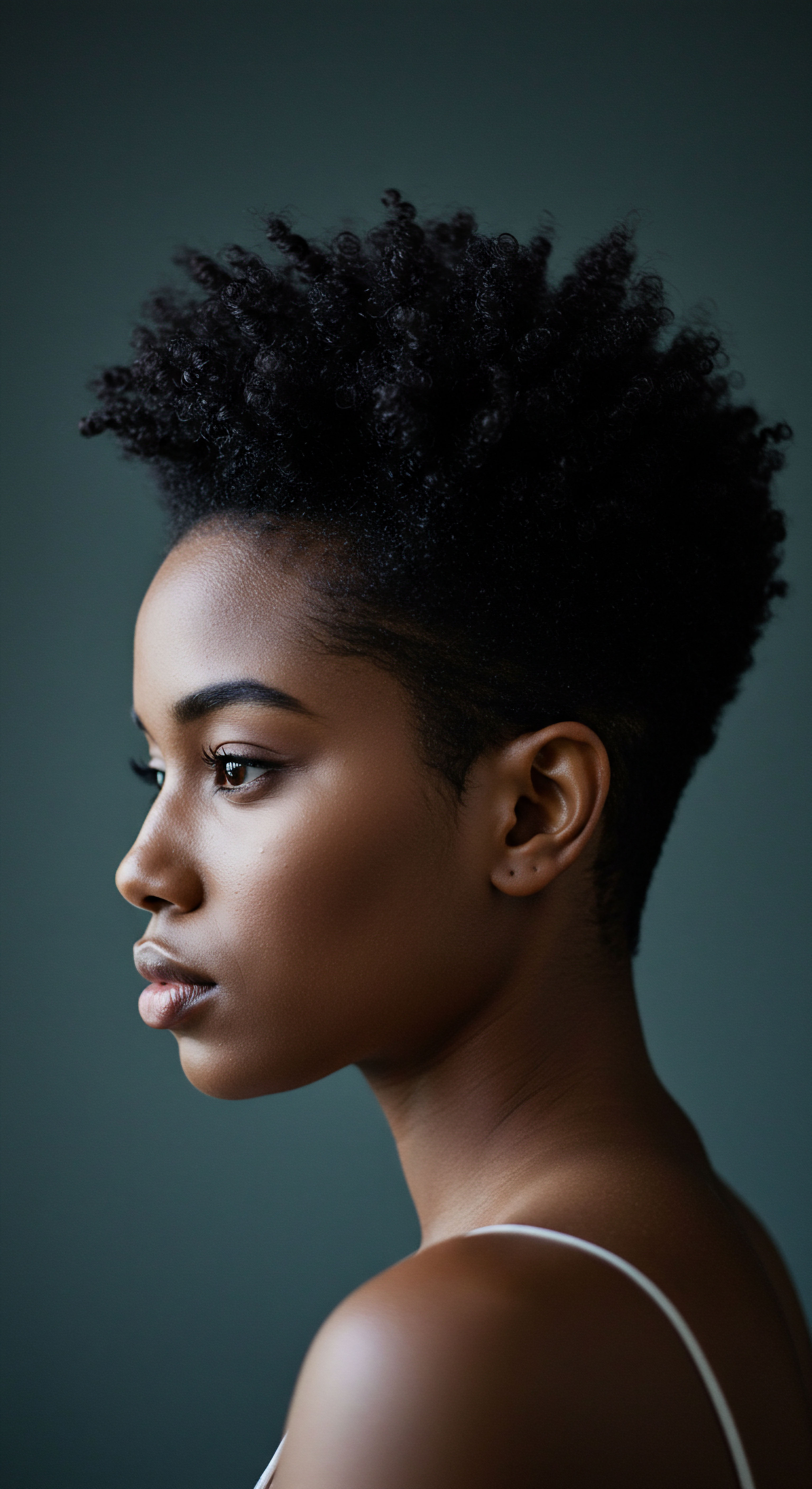
Roots
Consider the very strands that spring from a scalp, each a testament to ancestry, a delicate yet resilient structure holding stories within its coils and curves. For too long, the inherent beauty of textured hair has faced the imposition of norms that seek to diminish its presence, to reshape what is naturally given into something deemed more “acceptable.” This societal pressure, often codified into formal policies, touches the deepest sense of self, reaching back through generations where hair has always held a place of honor, a symbol of identity, community, and resistance. To truly grasp the breadth of these implications, we must first descend to the foundational elements, the very architecture of textured hair, and the historical currents that have sought to define it.
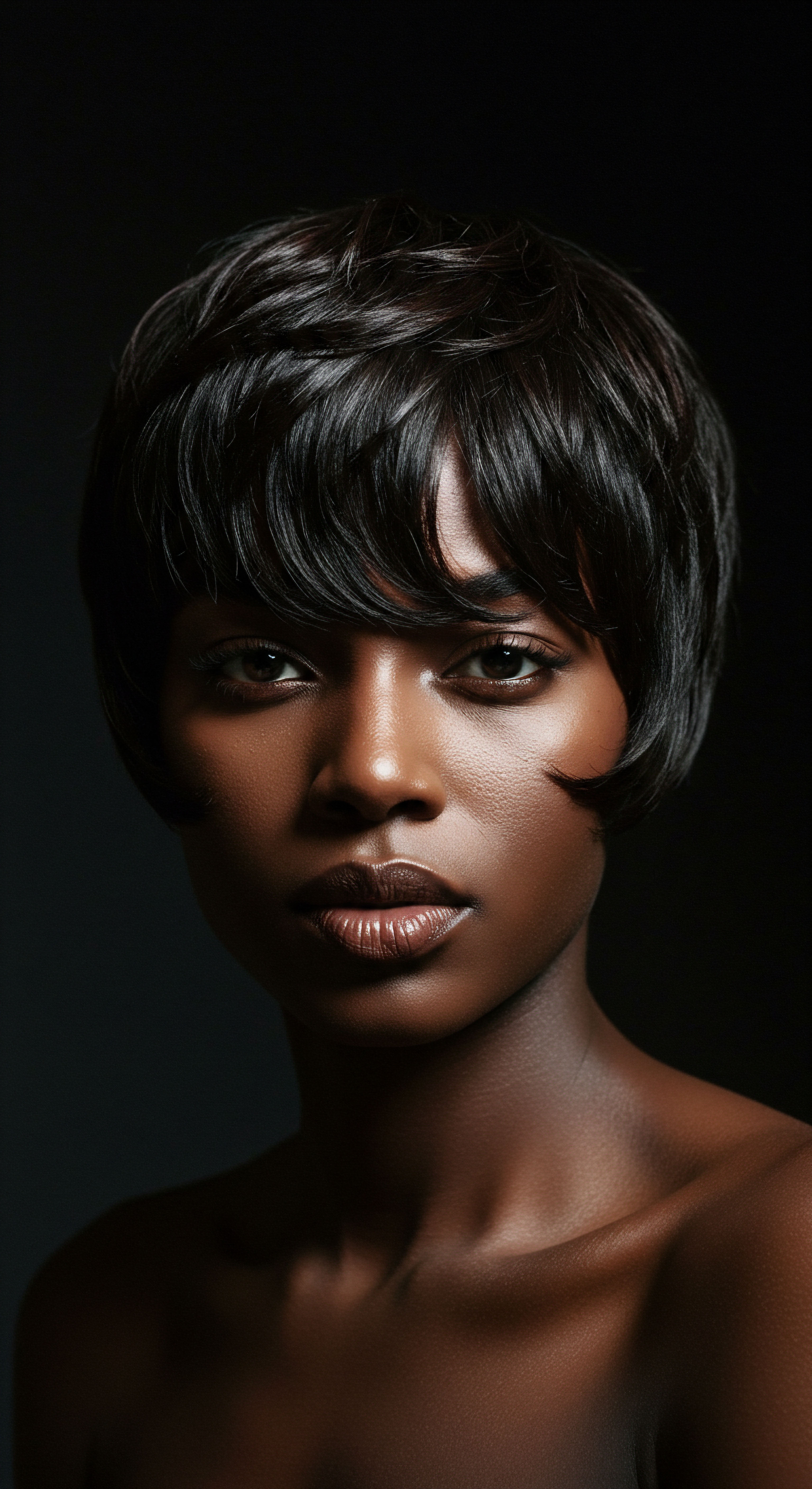
Anatomy and Physiology of Textured Hair
Textured hair, particularly that of Black and mixed-race individuals, exhibits a remarkable diversity in its physical characteristics. Unlike straight or wavy hair, highly coiled strands possess an elliptical or flattened cross-section, contributing to their distinct curl patterns. This unique shape, along with an uneven distribution of keratin along the hair shaft, creates points of weakness where the strand can be more susceptible to breakage.
The cuticle, the outermost protective layer, tends to be more open in coiled hair, allowing moisture to escape more readily. This inherent predisposition to dryness means textured hair often requires specific care approaches to maintain its integrity and health.
Understanding the microscopic world of hair helps us appreciate its needs. The hair follicle, the tiny organ beneath the skin’s surface, dictates the curl pattern. Its shape and the angle at which it emerges from the scalp play a significant part in the hair’s final form. For those with tighter coils, the follicle often has a distinct curvature, causing the hair to grow in a spiraling manner.
This growth pattern means that natural oils produced by the scalp, known as sebum, struggle to travel down the entire length of the strand, further contributing to dryness. This dryness, often misconstrued as a sign of neglect, is simply a biological reality of the hair’s structure.

What are the Classification Systems for Textured Hair?
Various systems attempt to categorize hair texture, most notably the Andre Walker Hair Typing System, which classifies hair from Type 1 (straight) to Type 4 (coily). Within Type 4, further distinctions are made, such as 4a, 4b, and 4c, indicating progressively tighter coil patterns. While these systems offer a descriptive shorthand, they fall short of capturing the full spectrum of diversity within textured hair. Each individual’s hair is a unique constellation of curl patterns, porosity levels, density, and strand width.
The intricate biology of textured hair demands an appreciation for its distinct needs, challenging generalized beauty standards.
Focusing solely on a numerical or alphabetical classification can sometimes oversimplify the richness of textured hair. A person might have 4a coils at the temples, 4b curls at the crown, and 4c coils at the nape. This variability on a single head underscores the limitations of rigid classification and the need for a personalized approach to care and styling. The very act of categorizing, while useful for discussion, can inadvertently contribute to a perception of “otherness” if not approached with a spirit of celebration for each unique expression of hair.
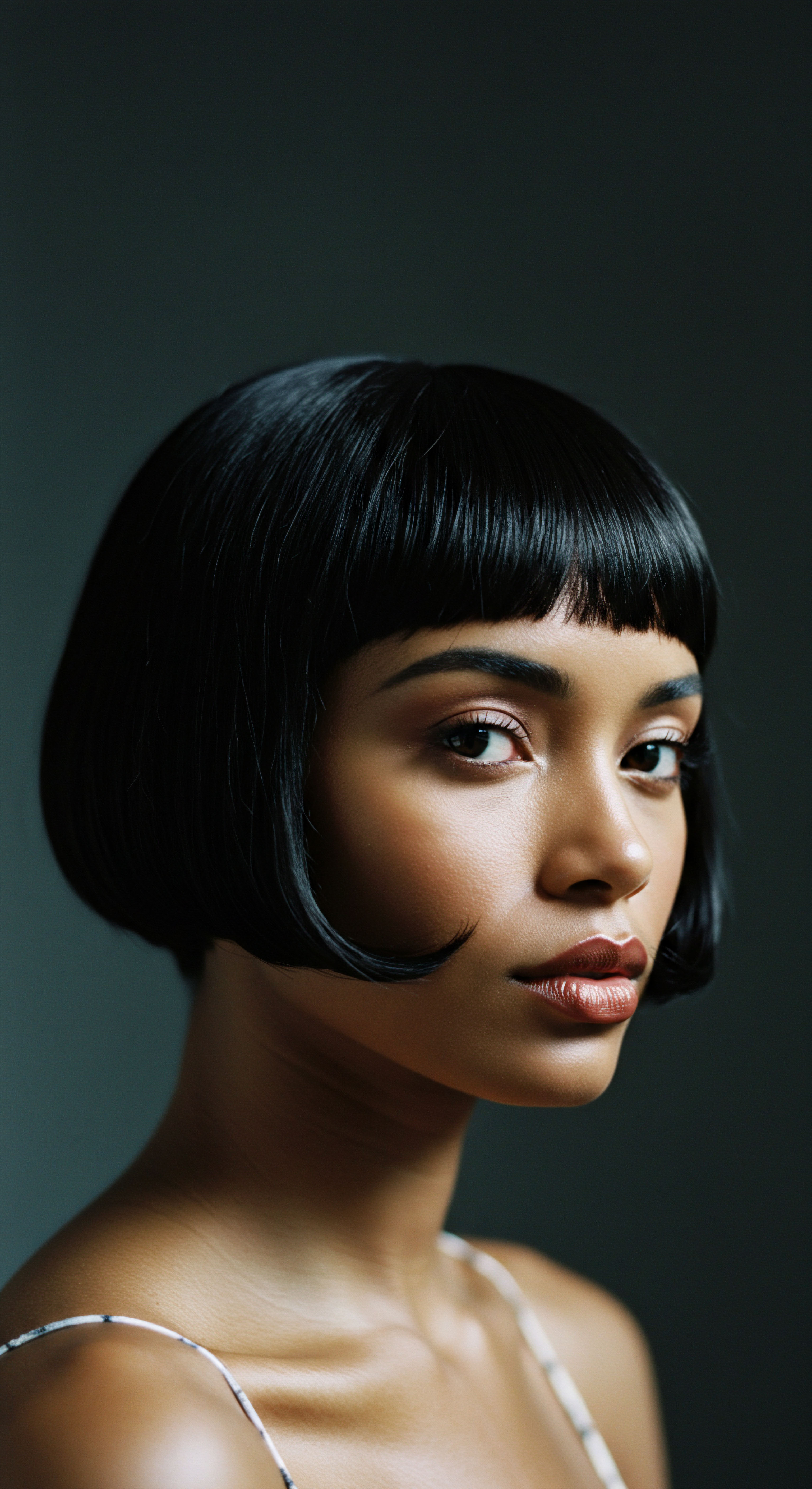
The Essential Lexicon of Textured Hair
A language has grown around textured hair, a vocabulary that speaks to its care, its styling, and its cultural significance. Terms like “co-wash,” “pre-poo,” “wash and go,” “twist-out,” and “locs” are not mere jargon; they represent specific practices and styles developed over generations to nourish and adorn these unique strands. This lexicon is a marker of community, a shared understanding among those who navigate the world with textured hair.
- Co-Wash ❉ A cleansing method using conditioner instead of shampoo to maintain moisture.
- Pre-Poo ❉ A treatment applied before shampooing to protect hair from stripping.
- Wash and Go ❉ A styling technique that allows natural curls to air dry after washing and conditioning.
- Twist-Out ❉ A style achieved by twisting sections of damp hair, allowing them to dry, then unraveling for definition.
- Locs ❉ A permanent hairstyle where hair is matted into ropes.
Beyond practical terms, words like “kinky,” “nappy,” and “unruly,” historically weaponized to demean textured hair, are being reclaimed and redefined by the community as descriptors of beauty and strength. This reclamation is a powerful act, transforming once-negative labels into affirmations of self-acceptance and pride. The shift in language reflects a broader societal movement towards honoring diverse hair expressions.

Hair Growth Cycles and Influencing Factors
All hair follows a growth cycle consisting of three main phases ❉ anagen (growth), catagen (transitional), and telogen (resting/shedding). The duration of the anagen phase largely determines hair length. While the fundamental cycle remains constant across hair types, factors like genetics, nutrition, health, and environmental stressors can influence its progression. For textured hair, practices that reduce friction and manipulation, such as protective styles, can help prolong the anagen phase by minimizing breakage, allowing for greater length retention.
Policies that target natural hair textures often disrupt this delicate cycle indirectly. The pressure to chemically straighten hair, for instance, can cause significant damage, leading to breakage and thinning, effectively shortening the hair’s lifespan and hindering healthy growth. This physical toll on the hair mirrors the psychological toll on the individual, as the constant battle against natural inclinations impacts both the hair’s vitality and one’s self-perception.
| Phase Anagen |
| Description Active growth phase, where hair cells rapidly divide. |
| Typical Duration 2-7 years |
| Phase Catagen |
| Description Transitional phase, hair follicle shrinks. |
| Typical Duration 2-3 weeks |
| Phase Telogen |
| Description Resting phase, old hair sheds as new hair begins to grow. |
| Typical Duration 2-4 months |
| Phase Understanding these phases helps in recognizing healthy hair behavior and addressing concerns. |
The biological realities of textured hair, from its unique structural vulnerabilities to its growth patterns, underscore the inherent unfairness of policies that do not account for its natural state. When societal standards mandate a departure from natural hair, they implicitly demand practices that can be detrimental to hair health and individual well-being. This foundational understanding is a first step in appreciating the deep societal implications of hair policies.
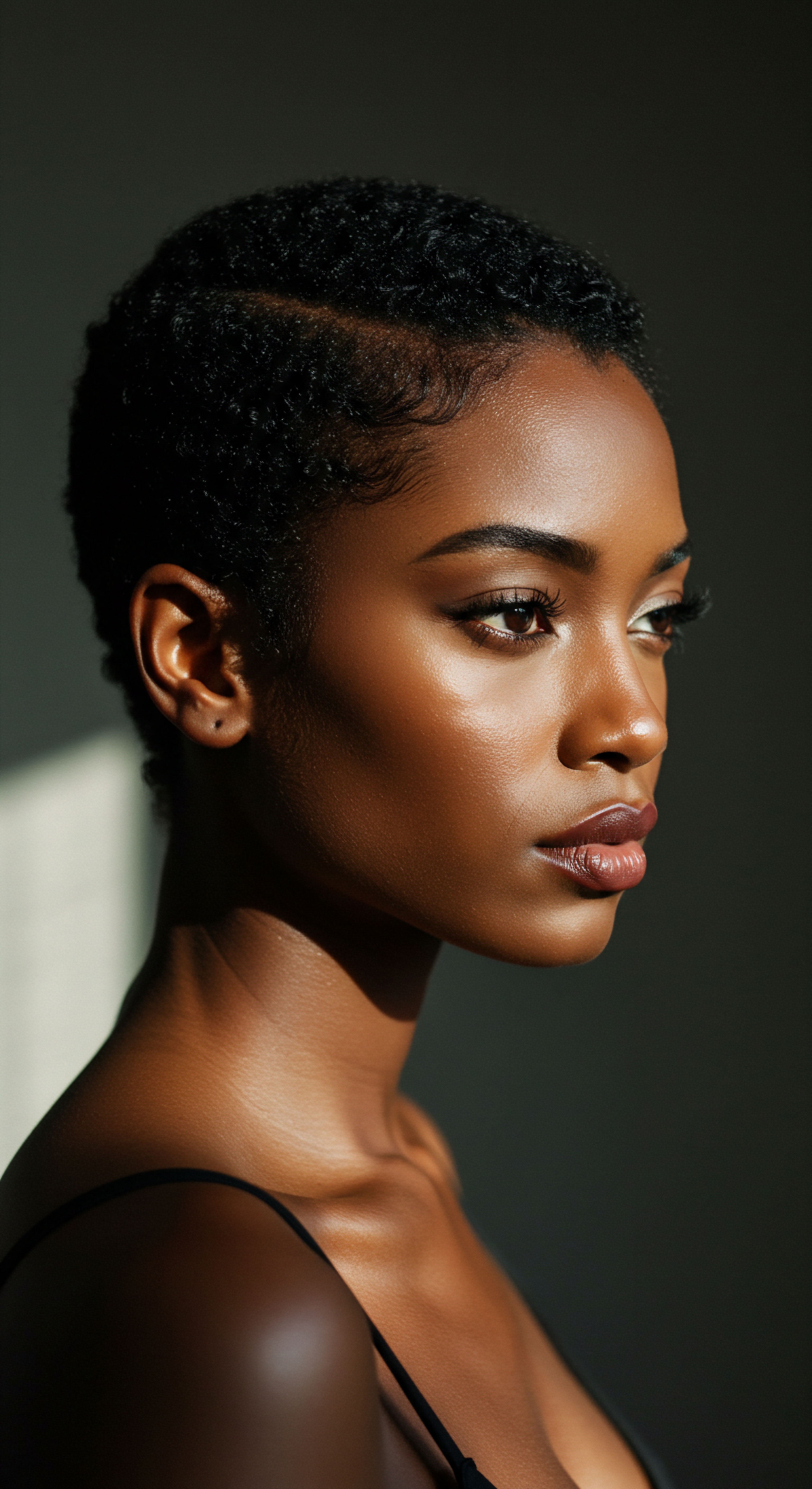
Ritual
As we step from the scientific grounding of hair’s very being, we encounter the practices, the quiet moments, and the communal acts that shape our daily interaction with textured hair. This is the realm of ritual, where knowledge transforms into action, where intention guides the hands, and where the applied wisdom of generations finds its expression. Policies targeting natural hair textures disrupt these personal and communal rituals, imposing external pressures that can warp what should be a nurturing relationship with one’s hair. This section delves into the techniques, tools, and transformations that define the experience of textured hair, revealing how external dictates clash with internal practices.
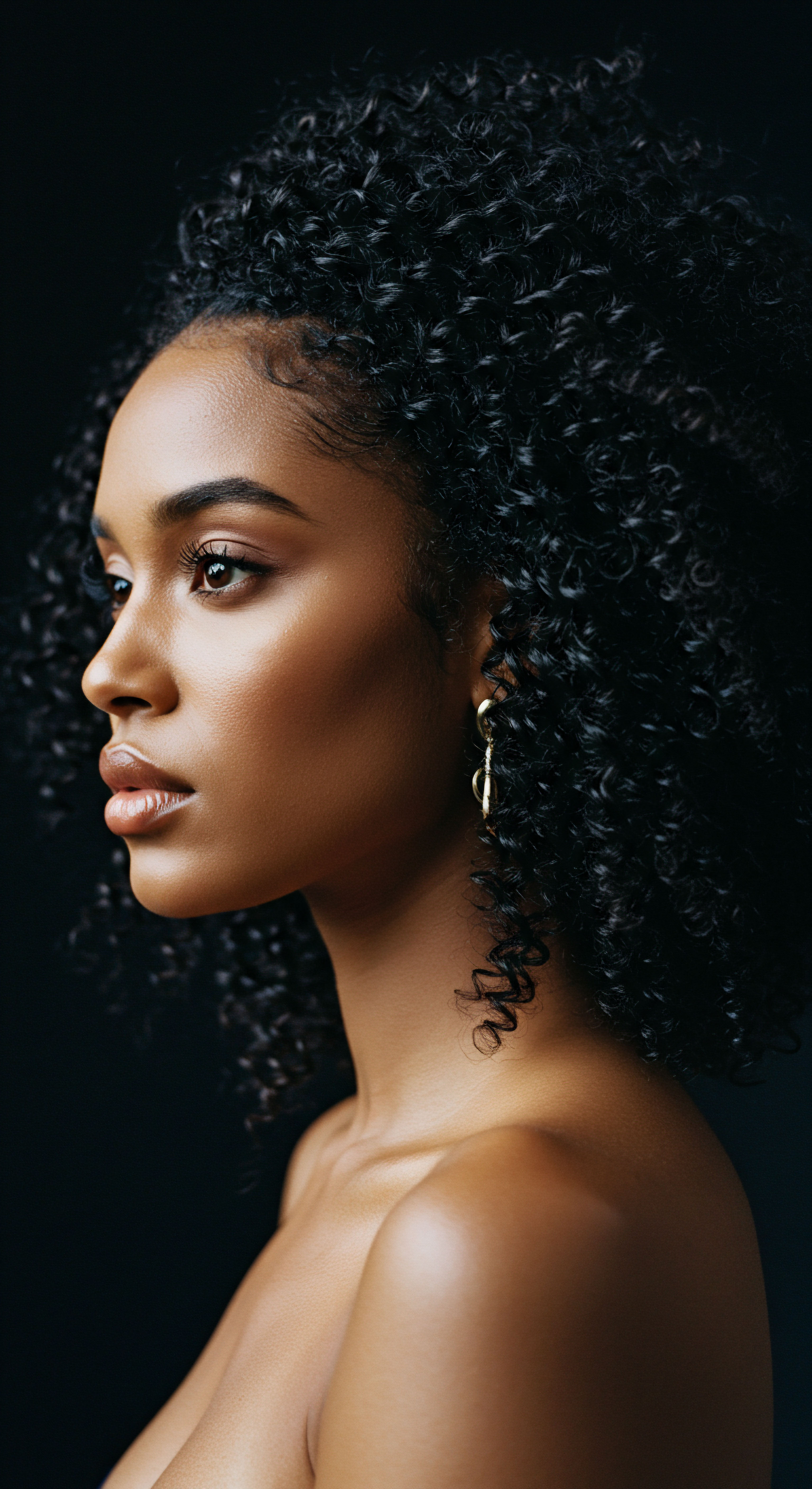
Protective Styling as a Cultural Anchor
Protective styles serve as more than just aesthetic choices; they are a cornerstone of textured hair care and cultural expression. Styles such as braids, twists, and locs minimize manipulation, guard against environmental damage, and allow hair to retain moisture and length. These styles are often steeped in history, carrying ancient traditions and stories. They offer a respite from daily styling, contributing to hair health and growth.
The significance of these styles extends beyond their practical benefits. They are often a means of connecting with heritage, a visible sign of identity. For many, wearing protective styles is a statement of cultural pride, a link to ancestors who wore similar styles for practical and ceremonial purposes. When policies deem these styles “unprofessional” or “unsuitable,” they strike at the heart of cultural expression and personal autonomy.
Protective styles, deeply rooted in cultural practice, offer both physical hair care and a powerful statement of identity.
Consider the historical context of hair manipulation as a tool of control. The 1786 Tignon Law in Louisiana, for instance, compelled free women of color to cover their hair with a knotted headdress, a direct attempt to diminish their perceived social status and control their appearance. Yet, these women transformed the mandate into an act of defiance, adorning their headwraps with vibrant fabrics and jewels, turning a symbol of oppression into a statement of style and resistance. This historical echo reverberates today when policies attempt to dictate how textured hair should be worn, often forcing individuals to choose between their authentic selves and societal acceptance.

What Techniques Define Natural Hair Styling?
Natural styling and definition techniques are an art form, celebrating the inherent curl patterns of textured hair. Methods like the “wash and go,” twist-outs, braid-outs, and Bantu knot-outs allow individuals to showcase their hair’s natural texture, providing shape and volume without relying on heat or harsh chemicals. Each technique requires a nuanced understanding of one’s specific curl pattern and porosity to achieve desired results.
These techniques are not merely about appearance; they are about accepting and working with hair in its natural state. The process can be a meditative act, a quiet moment of self-care. The choices made in styling often reflect a personal journey of self-acceptance, moving away from Eurocentric beauty standards that historically promoted straightened hair as the ideal. When institutional policies indirectly or directly pressure individuals to alter their natural curl patterns, they interfere with this personal journey, creating internal conflict and external pressure.
- Finger Coiling ❉ Shaping individual curls with fingers for enhanced definition.
- Shingling ❉ Applying product to small sections of hair, smoothing each strand from root to tip.
- Roller Setting ❉ Using rollers on damp hair to create smooth, defined curls.
- Diffusing ❉ Using a diffuser attachment on a blow dryer to dry hair gently, preserving curl pattern.

Wigs and Hair Extensions Mastery
Wigs and hair extensions hold a complex position within the world of textured hair. For some, they offer versatility, a chance to experiment with different looks without altering natural hair. For others, they serve as a protective measure, allowing natural hair to rest and grow underneath. Historically, wigs also provided a means of conforming to societal beauty standards while preserving natural hair from damaging straightening practices.
The decision to wear wigs or extensions can be deeply personal, influenced by a myriad of factors from professional requirements to personal preference, health considerations, or simply a desire for change. However, policies that implicitly or explicitly demand the alteration of natural hair can push individuals towards these options not out of choice, but out of necessity, creating an additional financial and time burden. This subtle coercion highlights the societal cost of rigid appearance standards.

Heat Styling and Thermal Reconditioning with a Safety-First Approach
Heat styling, including blow-drying, flat-ironing, and curling, offers temporary straightening or shaping for textured hair. Thermal reconditioning, or chemical straightening, provides a more permanent alteration of the hair’s structure. While these methods can offer desired aesthetic outcomes, they carry significant risks to hair health, particularly for textured strands which are more susceptible to heat damage and chemical breakage due to their structural characteristics.
A safety-first approach to heat styling involves using heat protectants, limiting frequency, and employing lower temperatures. Chemical treatments, while offering lasting straightness, can weaken the hair’s disulfide bonds, leading to irreversible damage and potential scalp irritation. The pressure to maintain a straightened appearance, often driven by professional or social expectations, can lead to overuse of these damaging methods, compromising hair health in the long term.
Research indicates that chemical hair straightening products have been associated with increased risks of uterine cancer and breast cancer. This stark reality underscores the severe health implications when societal pressures dictate hair choices.

The Complete Textured Hair Toolkit
Caring for textured hair requires a specific set of tools, each designed to respect its unique structure. Wide-tooth combs, detangling brushes, satin or silk bonnets, and spray bottles are not mere accessories; they are essential components of a regimen designed to minimize breakage, retain moisture, and preserve curl definition.
| Tool Wide-tooth comb |
| Purpose Gentle detangling |
| Benefit for Textured Hair Reduces breakage on fragile curls. |
| Tool Satin/Silk Bonnet |
| Purpose Nighttime protection |
| Benefit for Textured Hair Minimizes friction, preserves moisture and style. |
| Tool Spray Bottle |
| Purpose Moisture application |
| Benefit for Textured Hair Allows for even distribution of water or refreshers. |
| Tool Microfiber Towel |
| Purpose Drying hair |
| Benefit for Textured Hair Less friction than cotton, reduces frizz and breakage. |
| Tool Selecting the right tools is fundamental to maintaining healthy textured hair. |
The selection and use of these tools are part of the ritual, a conscious engagement with hair care that prioritizes health over conformity. When policies disregard the needs of textured hair, they implicitly devalue the practices and tools necessary for its well-being, pushing individuals towards choices that may be physically harmful. This intersection of personal ritual and societal mandate reveals a deep tension.
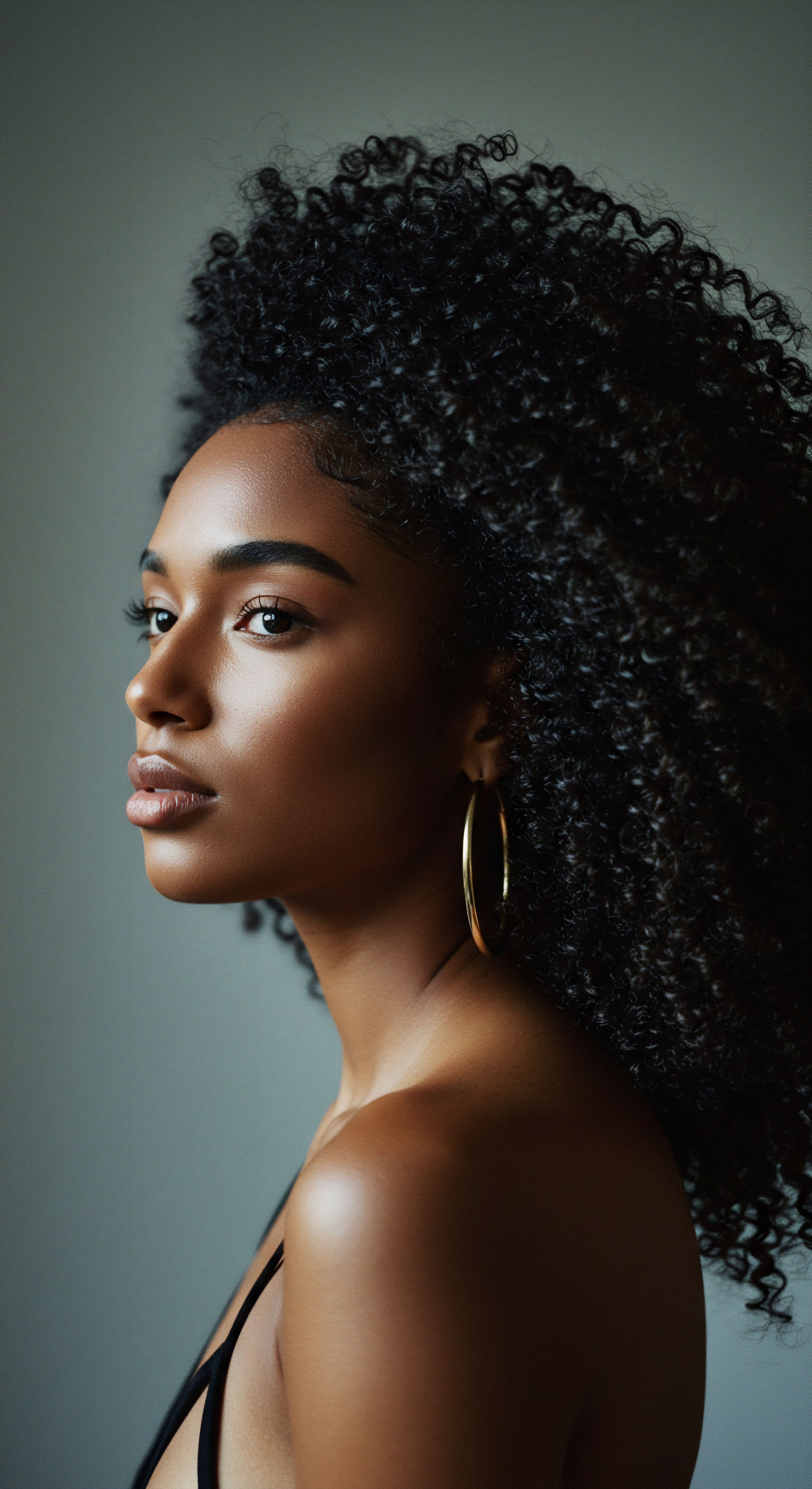
Relay
Having explored the very fabric of textured hair and the rituals that attend its care, we now step into a broader arena, one where individual strands become symbols within a larger societal discourse. The societal implications of policies targeting natural hair textures are not confined to personal preference or daily routines; they ripple through education, employment, mental well-being, and even the very constructs of identity. This section will delve into the historical currents and contemporary manifestations of hair-based discrimination, examining how formal and informal policies shape lives and perceptions.
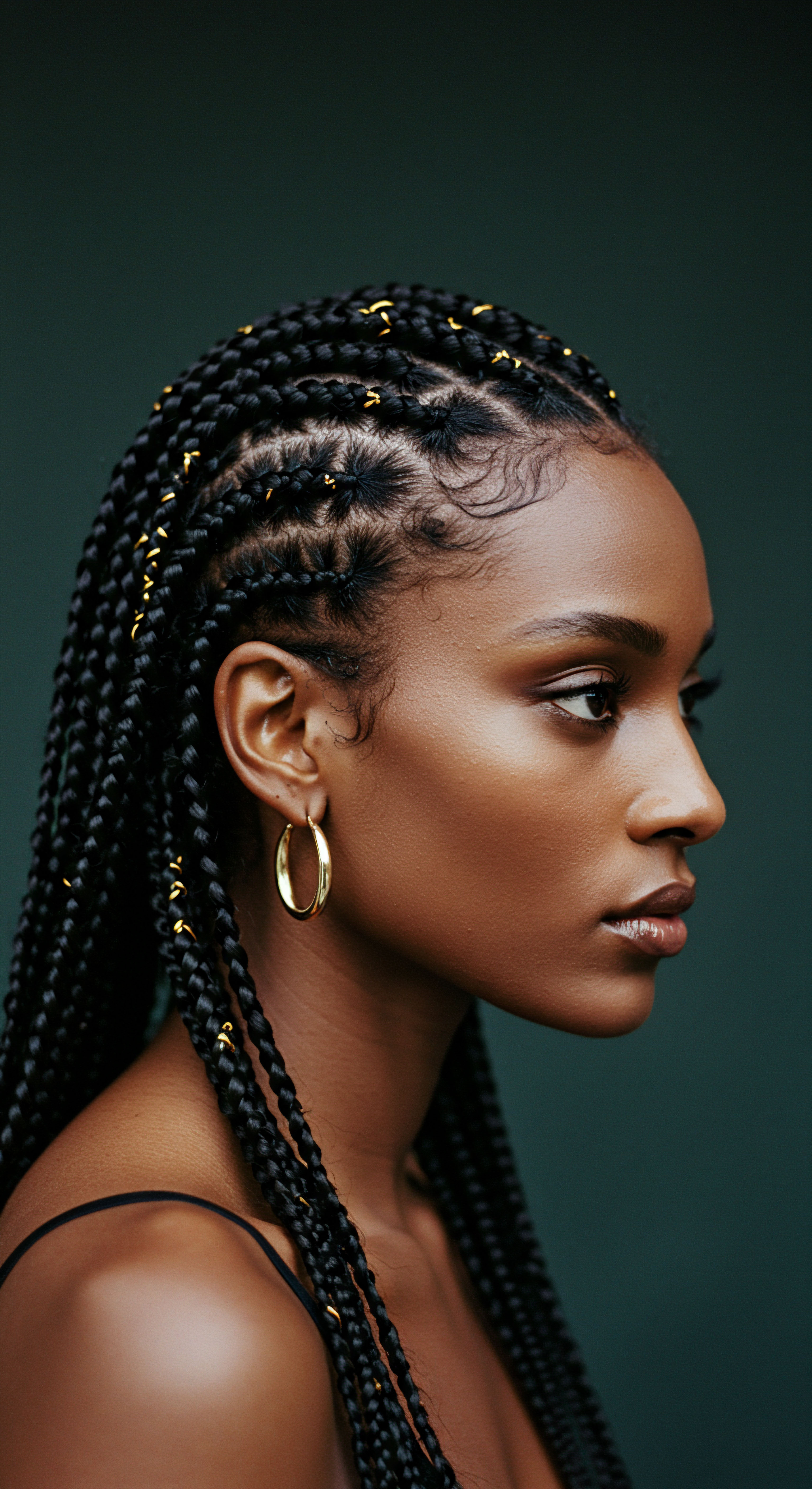
Historical Roots of Hair-Based Discrimination
The policing of Black hair has a long and painful history, deeply entwined with systems of oppression. During slavery, slave owners often shaved the heads of captured Africans, a violent act intended to strip them of their cultural identity and sever ties to their heritage. This practice aimed to dehumanize, erasing a significant aspect of self that, in many West African societies, conveyed status, age, marital standing, and tribal affiliation. The deliberate denigration of Black hair was a foundational element in establishing and maintaining racial hierarchies.
Following emancipation, attempts to control Black appearance continued. The Tignon Laws in 18th-century Louisiana, for instance, mandated that free women of color cover their elaborate hairstyles with scarves, a legislative effort to visibly distinguish them from white women and reinforce social stratification. This historical precedent demonstrates how policies, even seemingly superficial ones, have been wielded as tools of social control, aimed at enforcing Eurocentric beauty standards and undermining racial pride.
The language used to describe textured hair—terms like “unruly,” “nappy,” “coarse”—has deep roots in this history, originating from colonial and plantation rhetoric designed to dehumanize and categorize Black people as inferior. These terms, though now culturally unacceptable in polite discourse, have lingered, subtly influencing perceptions and contributing to ongoing biases.

How Do Policies Impact Education and Employment?
The impact of policies targeting natural hair textures is acutely felt in educational and professional environments. Dress codes and grooming policies in schools and workplaces frequently contain provisions that, while appearing neutral, disproportionately penalize individuals with natural Black hairstyles. These policies often mandate “neat,” “clean,” or “professional” appearances, standards historically rooted in Eurocentric aesthetics. Consequently, students are sent home, suspended, or denied participation in school activities, and adults face job loss, rescinded offers, or limited career advancement.
A significant study by Dove and LinkedIn in 2019 revealed that Black women are 2.5 times more likely to have their hair perceived as unprofessional, and 80% of Black women feel pressured to change their natural hair to meet workplace expectations. This pressure often translates into adopting styles that require chemical alteration or excessive heat, which can be damaging to hair health. The choice becomes one between professional acceptance and physical well-being.
Policies dictating hair appearance in schools and workplaces perpetuate systemic bias, forcing individuals to choose between cultural expression and opportunity.
Consider the case of Darryl George, a Black Texas high school student, who faced repeated disciplinary action and was denied access to public education due to the length of his locs, which violated a school district’s hair policy. This incident, among many others, underscores the direct link between appearance policies and the denial of fundamental rights, highlighting how a person’s hair can become an obstacle to their educational and professional journey. Such situations illustrate a broader societal issue where racial discrimination manifests through grooming standards.

Psychological and Emotional Well-Being
The constant pressure to conform and the experience of hair discrimination exact a heavy psychological and emotional toll. Individuals facing such biases report feelings of humiliation, sadness, anger, and frustration. The necessity to alter one’s hair to fit societal or institutional norms can lead to internalized racism, negative self-image, and anxiety about how one’s hair is perceived by others. This perpetual negotiation of identity in public spaces can generate chronic stress, impacting mental health and overall well-being.
The phenomenon extends to microaggressions, subtle yet frequent slights that communicate negative messages about textured hair. Comments like “Can I touch your hair?” or “Your hair looks so exotic” can contribute to a sense of otherness and objectification, making individuals feel that their hair is a curiosity rather than a normal expression of identity. These seemingly innocuous interactions chip away at self-esteem and belonging.
- Internalized Racism ❉ Adopting societal biases against one’s own racial group, including hair.
- Anxiety ❉ Persistent worry about hair appearance and potential discrimination.
- Self-Esteem Impact ❉ Diminished sense of worth due to negative perceptions of natural hair.
- Cultural Disconnection ❉ Feeling alienated from one’s heritage when forced to alter hair.

The Economic Dimensions of Hair Policies
Beyond the psychological, hair discrimination carries significant economic consequences. Individuals may lose job offers, face demotions, or be passed over for promotions due to their natural hair. This creates direct economic disparities, particularly for Black women who already face a wage gap.
For instance, in 2022, the median hourly wage for Black women was approximately 69.5% of that for white, non-Hispanic men, equating to a substantial annual income loss. Hair discrimination exacerbates these existing economic vulnerabilities.
The financial burden of conforming to Eurocentric standards also contributes to economic strain. The cost of chemical relaxers, weaves, or frequent salon visits to maintain straightened styles can be substantial, diverting income that could be used for other necessities. This economic pressure is a direct consequence of policies that do not accommodate or celebrate natural hair.
| Impact Area Job Offers Denied |
| Description Qualified candidates denied positions due to hair. |
| Relevant Data 25% of Black women believe they've been denied a job interview due to hair. |
| Impact Area Perceived Unprofessionalism |
| Description Natural hair seen as less suitable for work. |
| Relevant Data Black women's hair 2.5x more likely perceived as unprofessional. |
| Impact Area Conformity Costs |
| Description Financial expense of altering hair. |
| Relevant Data Chemical straightening costs between $38 and $435 per session. |
| Impact Area Hair discrimination contributes to significant economic disparities and burdens. |
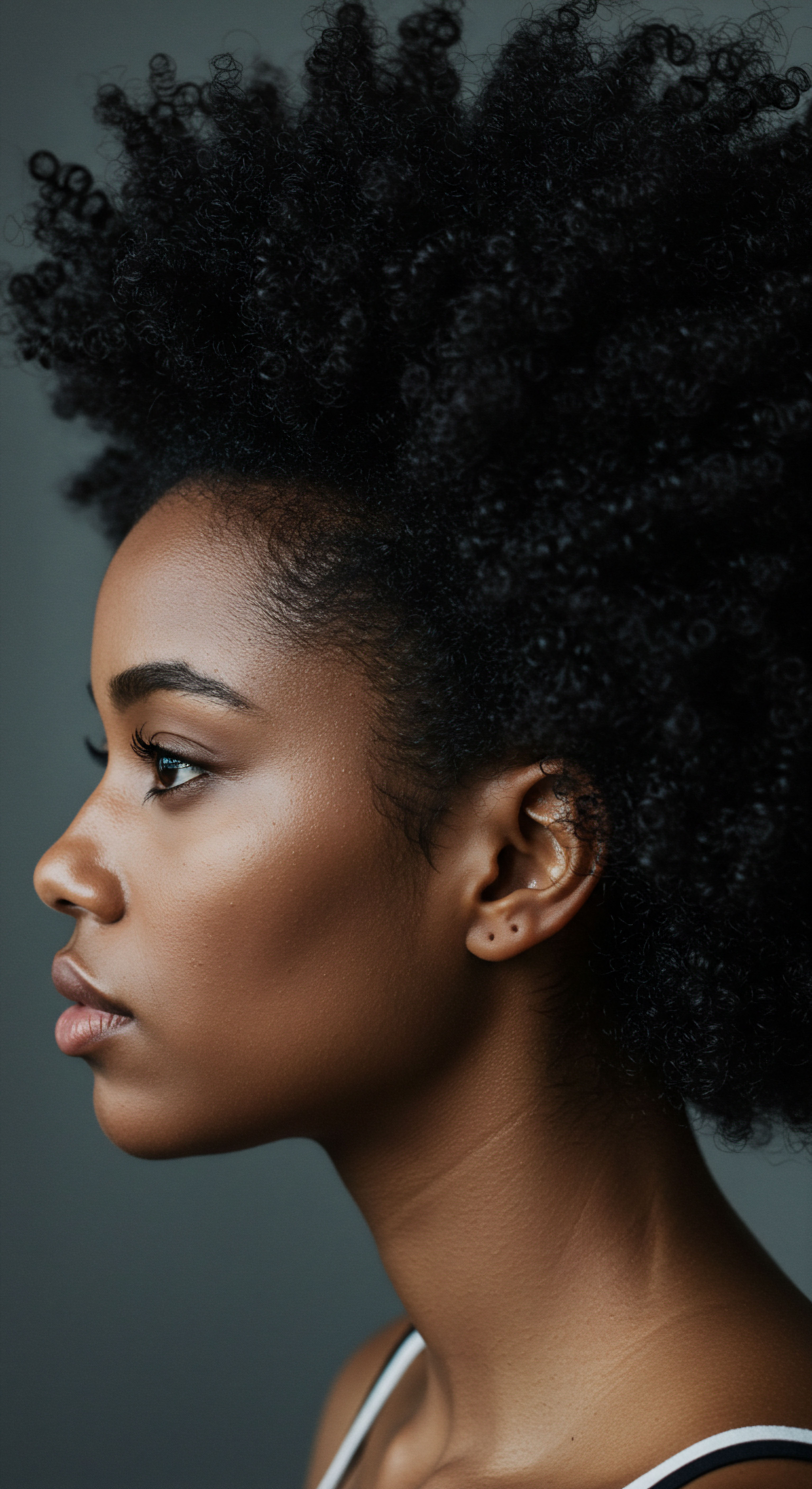
Legislative Responses and the CROWN Act
In response to pervasive hair discrimination, legislative efforts have emerged, most notably the CROWN Act (Creating a Respectful and Open World for Natural Hair). This legislation seeks to prohibit discrimination based on hair texture and protective hairstyles, such as locs, braids, twists, and Afros, in workplaces and schools. California was the first state to pass the CROWN Act in 2019, and since then, numerous states and municipalities have followed suit.
While the CROWN Act passed the U.S. House of Representatives in 2020 and again in 2022, it has yet to become federal law.
The CROWN Act represents a significant step towards legal recognition that hair discrimination is a form of racial discrimination. Its passage signifies a growing awareness of the historical and ongoing biases faced by individuals with textured hair. However, the varying legal protections across states mean that many individuals still lack explicit safeguards against hair-based discrimination. The movement for nationwide protection continues, underscoring the deep societal work still needed to ensure true equity.
The very existence of policies like the CROWN Act, born from persistent advocacy, highlights the deep-seated nature of the problem. It is a testament to the fact that cultural biases, when left unchecked, can translate into systemic barriers that affect a person’s access to education, employment, and their fundamental right to self-expression. The relay of this struggle, from historical oppression to contemporary legal battles, continues as society grapples with its collective perception of beauty and professionalism.
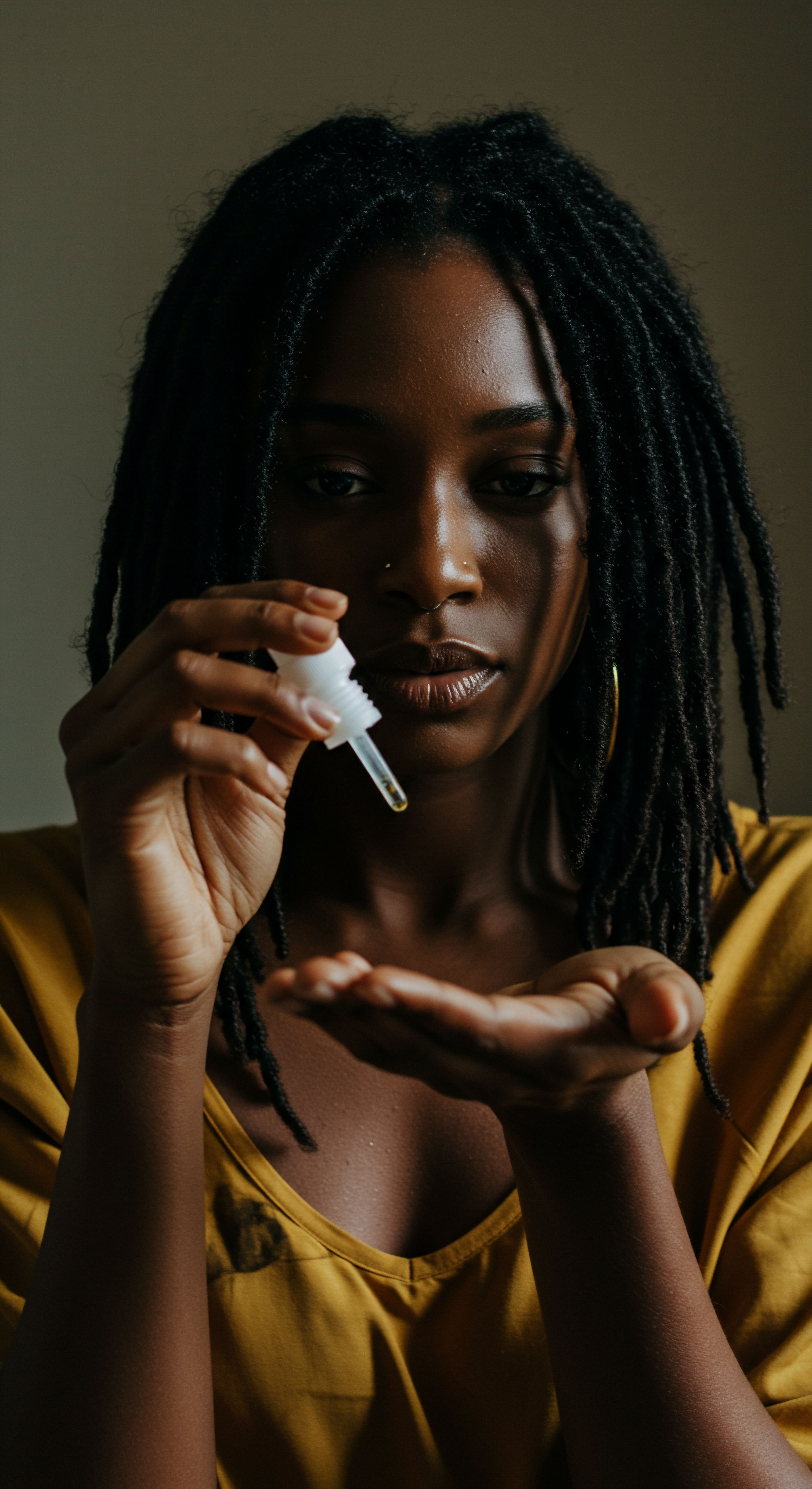
Reflection
The journey through the very roots of hair science, the intimate rituals of care, and the broader societal implications of policies targeting natural hair textures leaves us with a profound understanding. It is a testament to the enduring human spirit that finds beauty and strength in its authentic self, even when faced with external pressures to conform. The conversation around hair, particularly textured hair, extends far beyond aesthetics; it delves into history, identity, mental health, and economic equity. The ongoing push for policies that protect and celebrate natural hair underscores a collective desire for a world where one’s appearance is not a barrier to opportunity or a source of distress.
The strands that grow from our heads are more than just fibers; they are declarations, silent yet resonant, of who we are and where we come from. How might we, as a society, cultivate environments where every head, in its natural glory, is not just tolerated, but truly revered?

References
- Johnson, K. & Bankhead, T. (2014). The importance of hair in the identity of Black people. Nouvelles pratiques sociales, 26(2), 263-279.
- Kempf, J. J. et al. (2024). Confronting Hair Discrimination in Schools – A Call to Honor Black History by Protecting Student Rights. IDRA Newsletter, February 2025.
- Maharaj, C. (2025). Beyond the roots ❉ exploring the link between black hair and mental health. Research.
- Payne-Patterson, J. (2023). A growing number of states are passing the CROWN Act to ban hair-based discrimination. Economic Policy Institute Report.
- Stiel, L. et al. (2015). Hair Straightening Products and Breast Cancer. Journal of Clinical Oncology.
- Chang, C. et al. (2022). Hair Dye and Chemical Straightener Use and Breast Cancer Risk in a Large US Cohort of Black and White Women. Environmental Research, 207.
- Awad, G. H. et al. (2015). Beauty and body image concerns among African American women. Journal of Black Psychology, 41(3), 261-285.
- Mbilishaka, A. et al. (2023). The Politics of Black Hair. Psychology Today.
- Goodman, R. (2021). Wearing My Crown to Work ❉ The Crown Act as a Solution to Shortcomings of Title VII for Hair Discrimination in the Workplace. Digital Commons @ Touro Law Center.
- Singh, K. (2024). “Uneasy Lies the Head that Wears a Crown” ❉ A Critical Race Analysis of the CROWN Act. Journal of Black Studies, 52(1), 002193472110210.
- The CROWN Coalition. (2019). The 2019 CROWN Research Study for Women.